In winter, homeless people often face a painful choice: fire or frostbite
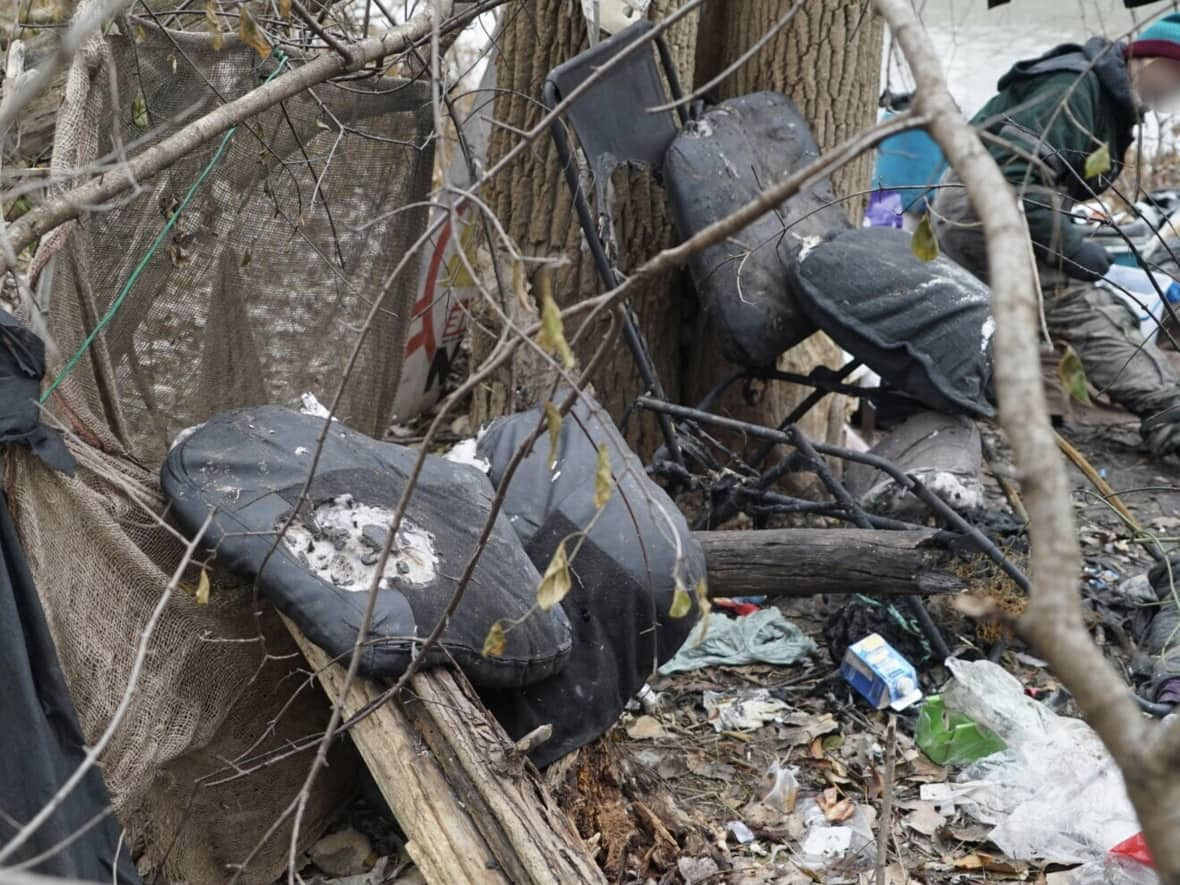
On a freezing December morning, a homeless man sifts through charred cushions and melted tarpaulins looking to salvage what he can from what's left of his possessions.
Blackened and singed, they're spread out on the muddy banks of the Thames River in London, Ont., as the smell of burned plastic is still heavy in the frosty air.
He tosses aside a scorched propane burner, the likely the source of the flames that incinerated his tent and turned his sleeping bag and much of his spare clothing into a heap of burned rags.
It's a scene becoming more common across the country as rising rents, unyielding inflation and limited shelter capacity force more people to sleep outside with nothing but a sleeping bag and a fire to stay warm — increasing the likelihood of injury and keeping local firefighters on their toes.
A Canada-wide problem
"I've seen it grow exponentially," Kirk Loveland, a platoon chief with the London Fire Department, said of the number of people sleeping rough in the city.
"I can base that on some of our busy engine companies and the number of alarms they respond to compared to years ago — 10 times a day on these types of alarms, whether it's people on the street, down and out, whatever format."
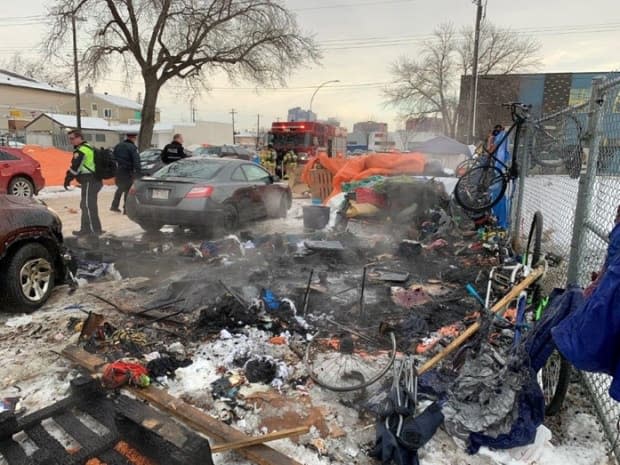
London isn't the only city grappling with this problem. Regina, Winnipeg and Kitchener-Waterloo have all recently dealt with fires in homeless encampments. No one was injured in those instances.
But in Toronto, a recent encampment fire left a man with life-threatening burns to 90 per cent of his body. And in Edmonton, a man died last week after a propane tank exploded in a homeless encampment. It was the fifth such fire death this year for Edmonton, and a problem that's now so pervasive, the city's fire chief called the fires his top concern.
Clandestine fires increase danger
Many Canadian cities have bylaws against open fires in urban areas, but the same rules meant to keep fire risk low inside a city also forces people sleeping rough to hide what's often their biggest source of winter warmth.
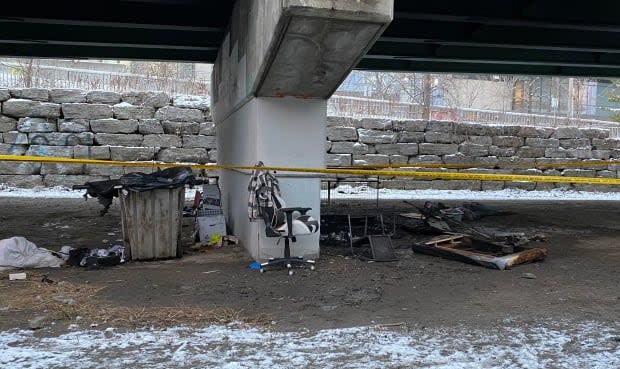
To cover their tracks, homeless people sometimes try to hide evidence of the fire before turning in the for the night, or obscure the flames themselves, said Carlos Buschinelli, the manager of outreach services for London Cares, a homeless support agency.
"The most safety concerning way they might do it is to enclose that open burn maybe within their tent or whatever structure they have up," he said.
"Unfortunately the materials of tents and sleeping bags are extremely flammable."
Fire safety manual for homeless encampments
Those tinderbox conditions are part of the reason why Sarah Rehou, who was a research co-ordinator in the burn unit at Sunnybrook Hospital in Toronto, started to see a steady stream of homeless people suffering burns during the pandemic.
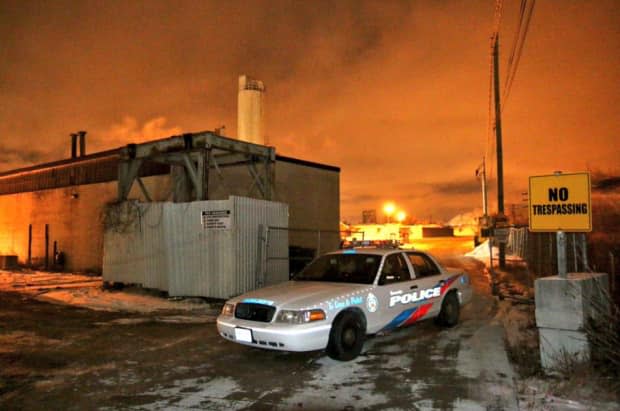
"We have seen an increase in the past two years because of COVID, simply because there were more people sleeping rough," she said. "There was a lack of spaces in shelters there was people were being turned away. Plus, people didn't always want to be sleeping indoors because of COVID."
The sudden uptick in burns among people experiencing homelessness caused researchers at Sunnybrook and the University of Toronto to follow up on a 2018 Ontario Coroner's inquest that into the death of Grant Faulkner. The 49-year-old homeless man died when his makeshift shelter caught fire on a frigid night in January 2015.
One of the specific recommendations was to recruit homeless people themselves to help create a safety manual that would cover situations specific to encampment life, so that's what researchers did.
"It's literally a matter of life and death," she said. "Unfortunately these recommendations were never developed and that's where this manual comes from."
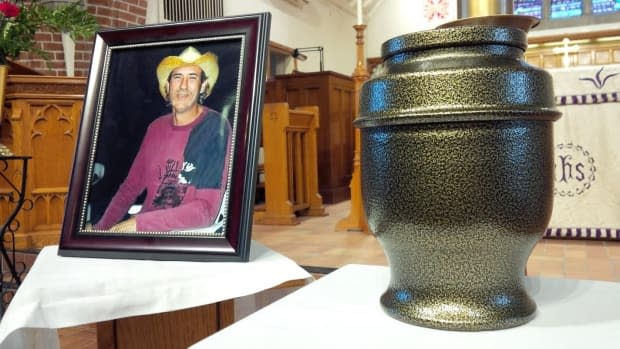
The result was a spiral-bound laminated book, about 11 pages long, full of tips on how to safely have a fire when you're forced to sleep outdoors. CBC News has included the manual at the bottom of this article.
Rehou said, once developed, the researchers held training sessions with outreach workers and groups of people sleeping rough and the results were almost immediate.
"Anecdotally, we know that it works. We know that training works," she said, noting one of the groups that was trained used a fire blanket to successfully smother flames in an encampment.
"There's definitely a part two to this and that's to actually scientifically study it to see if this manual made a difference."
The manual has already been distributed to a number of agencies in London that help people experiencing homelessness.
"We'll take anything if it will help," Buscanelli said. "We can use it, for sure."


